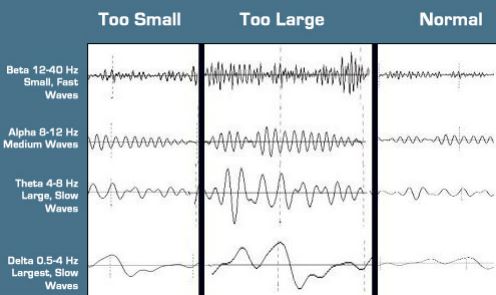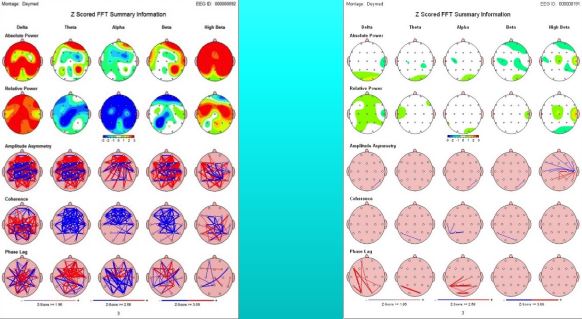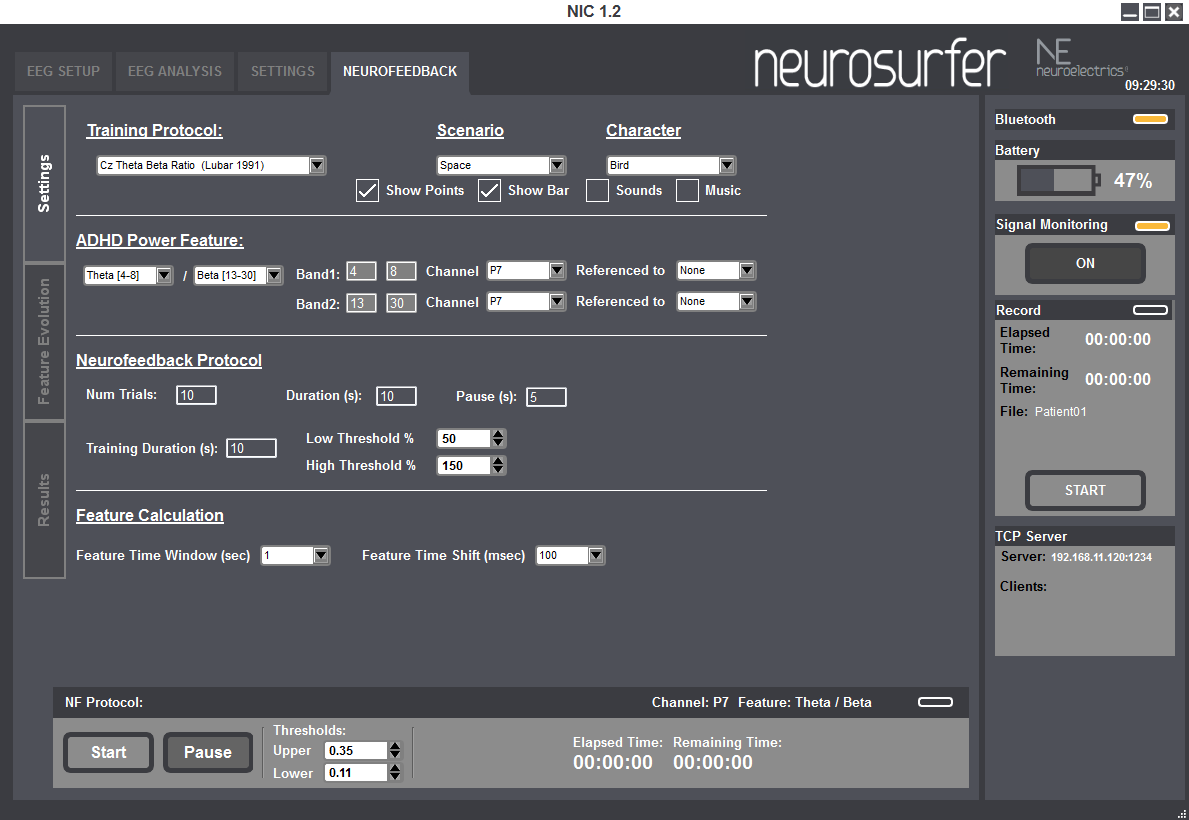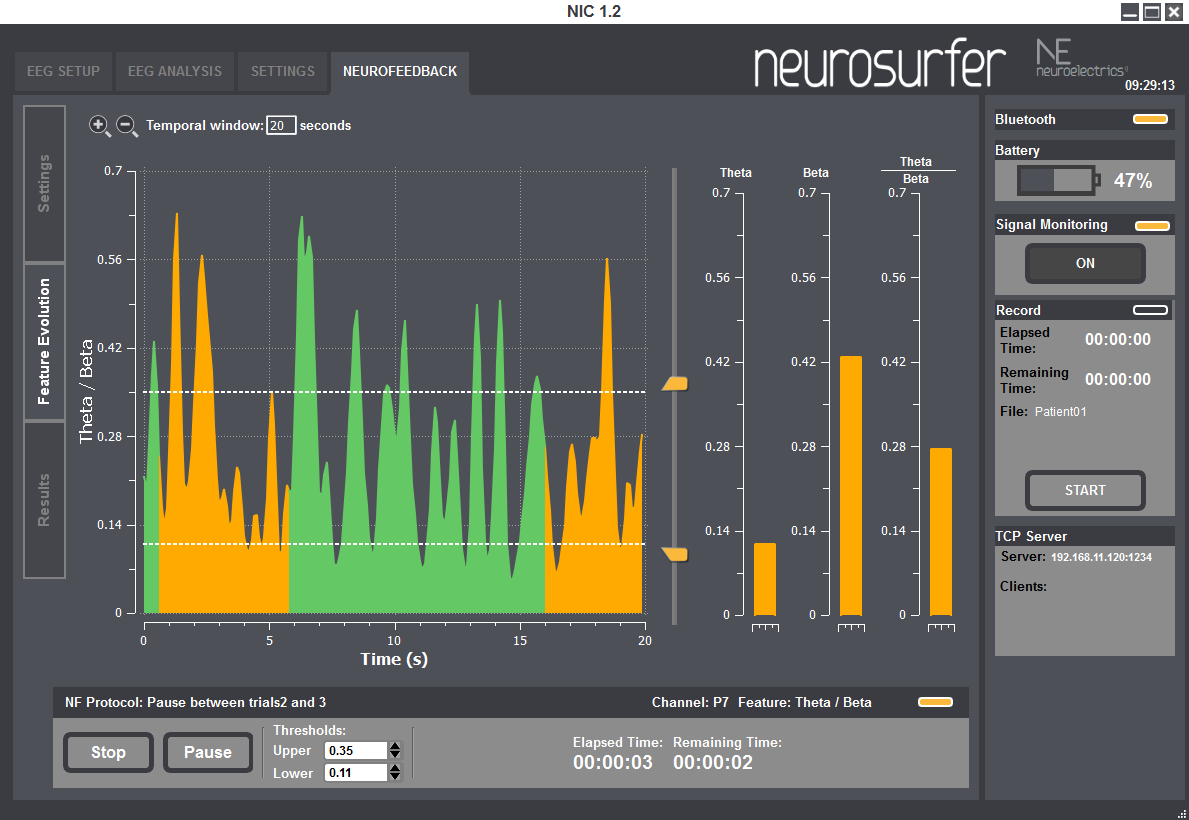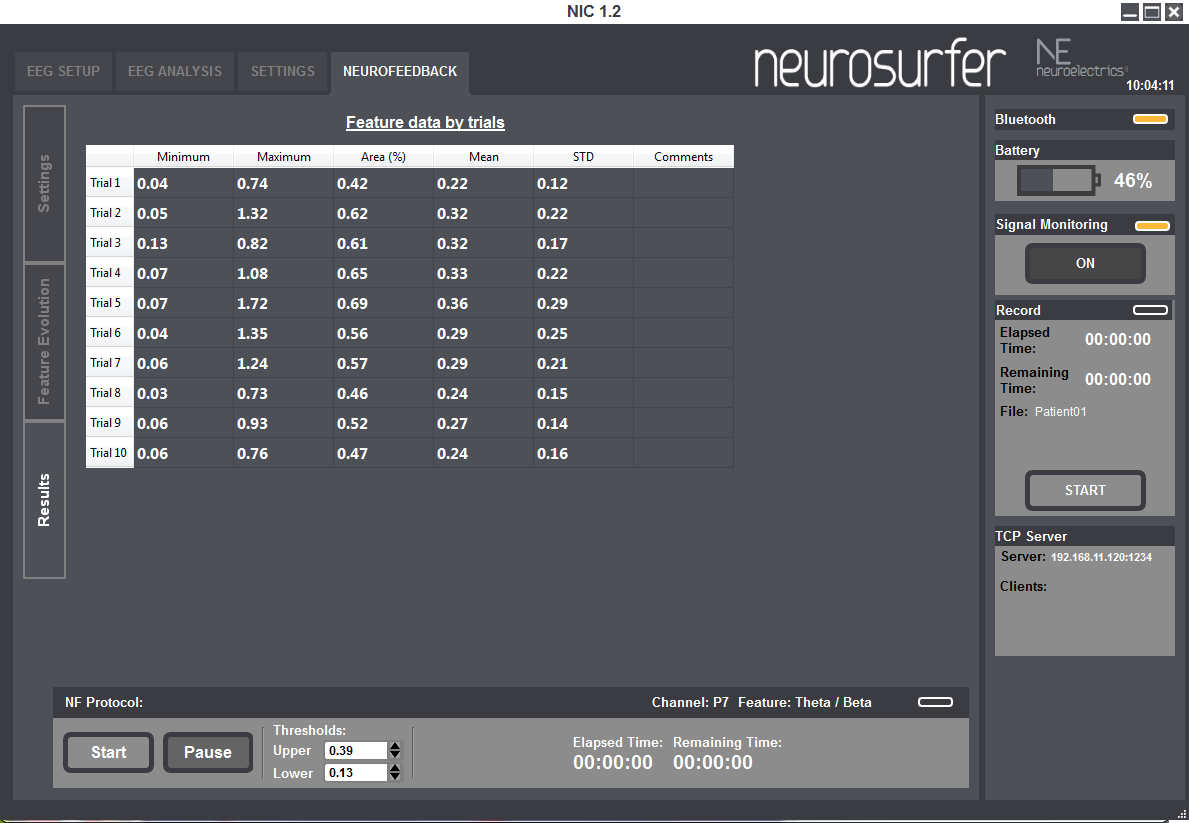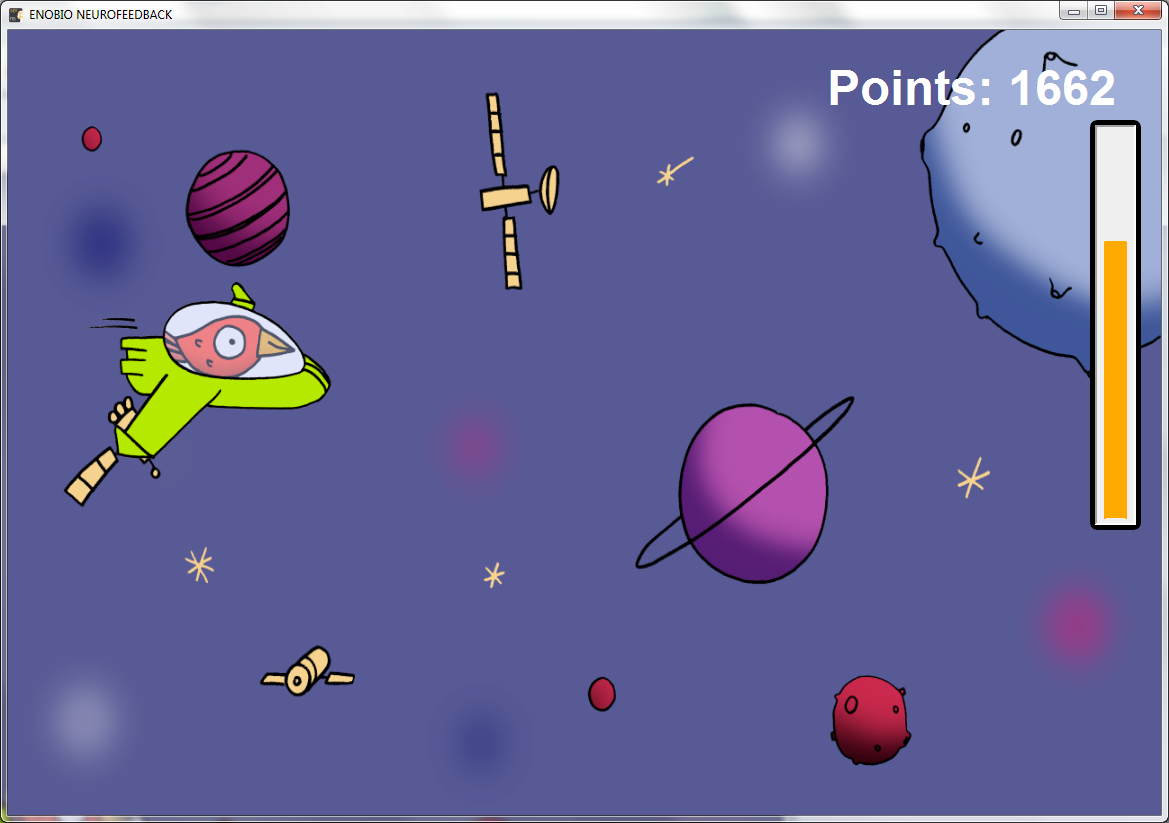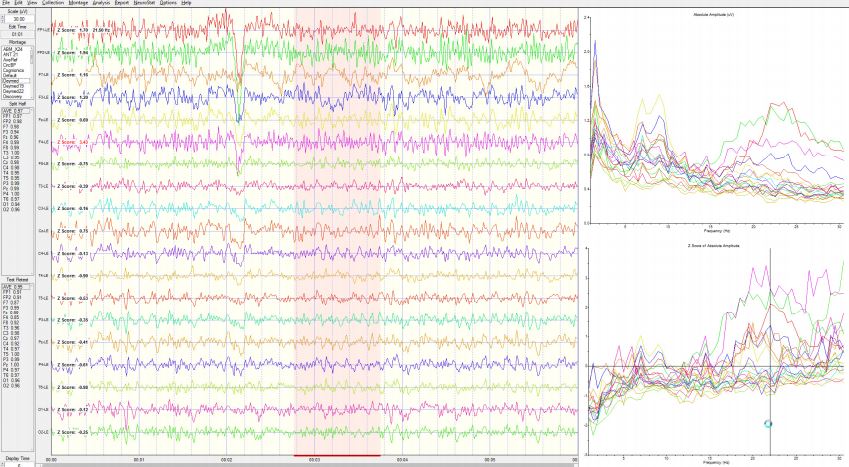Neurofeedback
Contents
What is Neurofeedback?
Neurofeedback is a type of biofeedback that uses real time displays of electroencephalography (EEG) to illustrate brain activity. EEG features are extracted and displayed allowing the user to study its temporal evolution in real-time. The goal of Neurofeedback is to monitor and present the patterns to be trained so that way the patient learns how to self-regulate them. Measured levels are transformed into commands that are used to control a game application. This kind of treatment can be used in medical applications (to treat autism, anxiety, depression, ADHD, etc.) and also for cognitive enhancement, relaxation meditation, concentration, attention or impulsivity training among others and other conditions related to brain function (epilepsy, chronic pain, addiction,etc.)
See the recent review by Arns et al 2013 on the application of Neurofeedback to ADHD for in-depth information about protocols and success cases.
Originally, Neurofeedback was done by training patients to alter aspects of their actual brainwave signals (Raw, EEG):
Today, Neurofeedback more commonly refers to training patients to change aspects of their quantitative EEG (qEEG) brain maps that have been shown to be causally related to their symptoms.
EEG presents rhythmic patterns that can be associated to mental and physiological states that are frequently studied in terms of frequency bands power. Studying a certain frequency band at an electrode or group of electrodes many physiological parameters can be extracted such as:
• Attention
• Impulsivity
• Mental Workload
• Stress
• Relaxation
Neurofeedback and ADHD
Attention deficit hyperactivity disorder (ADHD) is one of the most common psychiatric disorder in children. For over 50 years Ritalin and amphetamine derives have been used to treat ADHD. Even if they are considered safe drugs, they do have frequent side effects. Neurofeedback (NF) opens new possibilities for ADHD care providing a side effect free treatment. See the recent review by Arns et al 2013 on the application of Neurofeedback to ADHD for in-depth information about protocols and success cases.
Attention and impulsivity can be detected in the EEG. The calculated ADHD feature is displayed to the patient by means of a video game he has to control based on his
attention and hyperactivity measured levels. During neurofeedback treatment children learn how to regulate self-regulate them by playing video games.
NeuroSurfer
NeuroSurfer is a novel general purpose tool for neurofeedback ADHD training.
• Uses Enobio (wearable, wireless, easy to use sensor) in its 8 channel version for the measure of EEG.
• Robust reliable attention and hyperactivity EEG feature calculation based on band power analysis study.
• Multichannel flexible neurofeedback system.
• Compatible with most ADHD band power based training protocols.
• Provides simple, not stimulating, engaging neurofeedback training video game.
• Provides to the clinician an intuitive interface with appropriate visualization tools for sessions follow-up.
• Provides tools and methods for treatment follow-up and analysis.
Session configuration
NeuroSurfer offers flexible, fully configurable training session that fulfills almost every Neurofeedback band power based training protocol. The software offers the most popular ADHD training protocols and it also allows advanced users to customize them by defining:
• Band(s) cut-off frequencies.
• Training electrode(s).
• Feature temporal averaging.
• Feature update rate.
• Game type.
In the current NeuroSurfer version the ADHD training protocols included are:
• Theta/Beta ratio at Cz
• SMR training at C4
• 15-18 Hz band training at C3
Session Evolution
NeuroSurfer displays in real time the training features extracted from the EEG both in training and rest intervals. It also offers bar monitoring of the studied ADHD feature and the related EEG bands. Both upper and lower thresholds are displayed, and the user has different simple means to modify them in real time.
Session results
Simple statistics of the trained feature are offered to the user. These statistics are extracted for every training trial and include:
• Minimum value
• Maximum value
• Area
• Mean value
• Standard deviation
Game
The game proposed in the current version of NeuroSurfer is a simple game in which the measured value respect to the defined upper and lower thresholds is translated into a game command used to set the height of the character.
Thresholds can be set by the clinician based on his expertise and/or child performance in previous sessions or automatically calculated by the application.
The game includes three characters and four scenarios. The user can decide whether to add to the game auditory feedback and further visual feedback (points and/or a bar displaying the trained feature value).
Videos
{{#ev:youtube|EyHWiikFbFE|600|center|Neurosurfer Sneak Preview! Neurosurfer - our solution for Neurofeedback with Enobio and Starstim - will be released in Q1 2014. Ask us for more information. http://neuroelectrics.com}}
{{#ev:youtube|NiKEh7VjC_E|600|center|Neurosurfer Sneak Preview with Copter BCI}}
Neuroguide
Neuroguide is:
• An FDA Registered Database of Normative qEEG Values
• A computer program that can compare the qEEG values of a given patient to the normative database and comparative produce brain maps
• A system for collecting and recording (“acquiring”) EEG in real time
• A set of tools for doing Neurofeedback on patients to help them retrain the brain functioning in order to address their behavioral health problems
• A research tool for doing statistical analyses on groups of brain maps
• Many other uses
